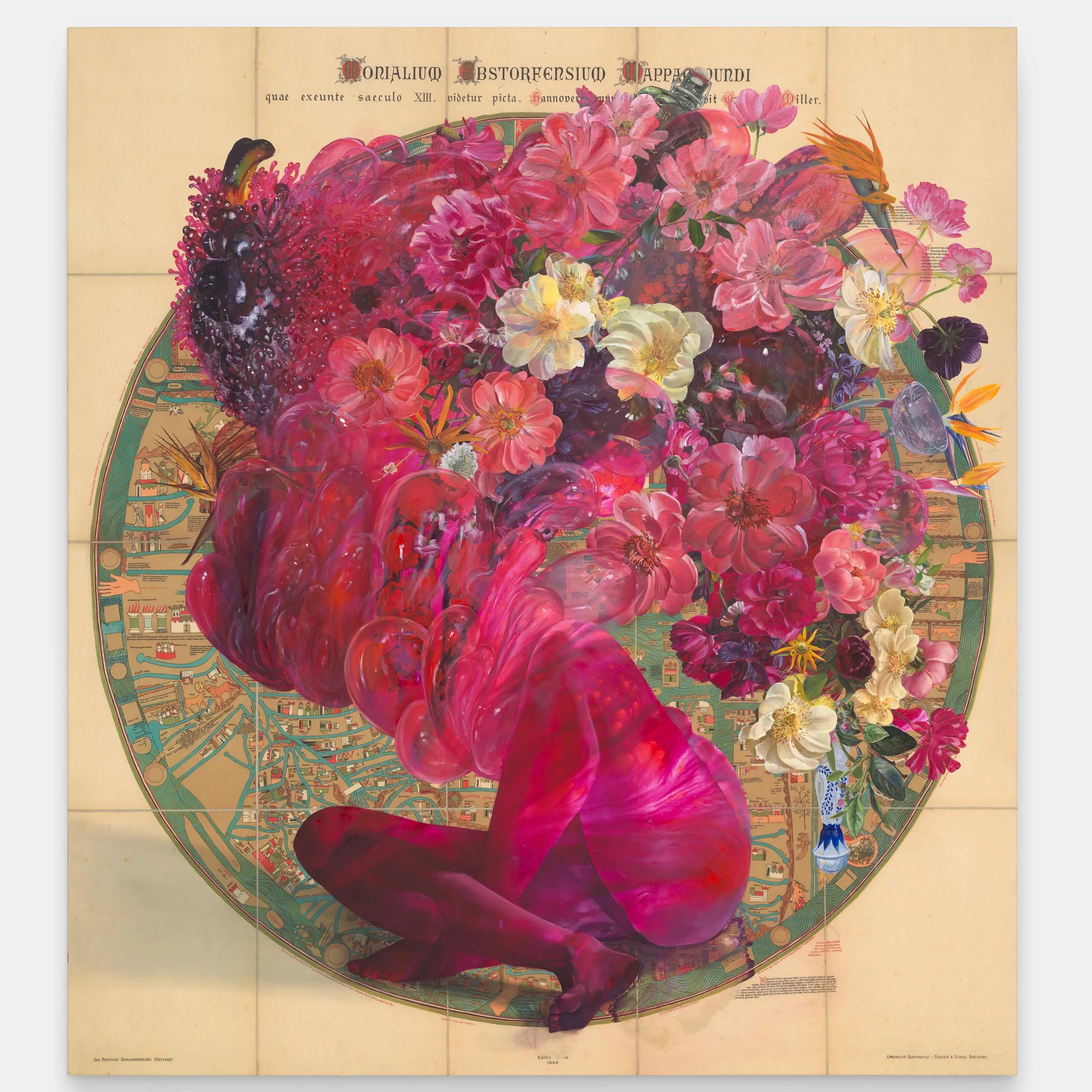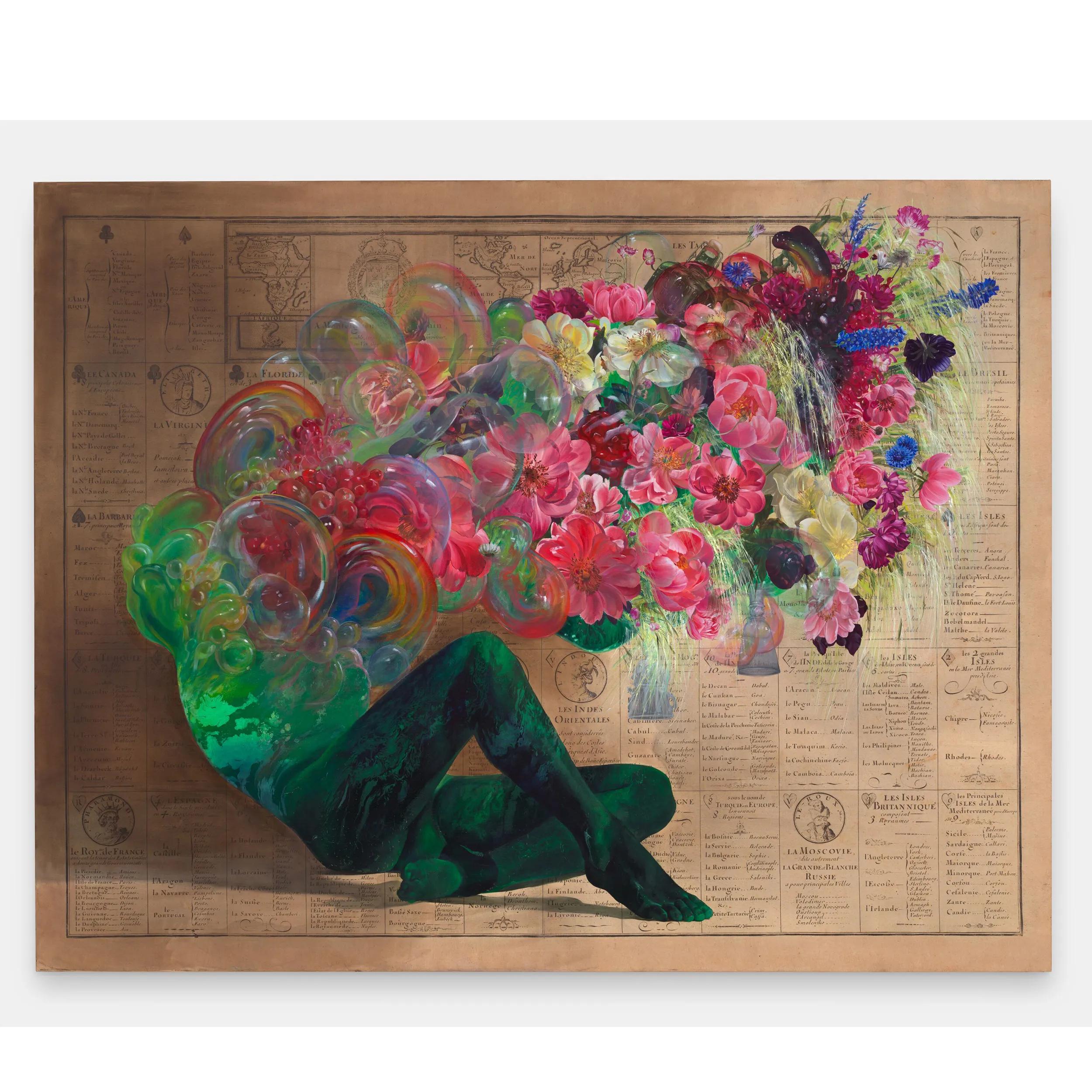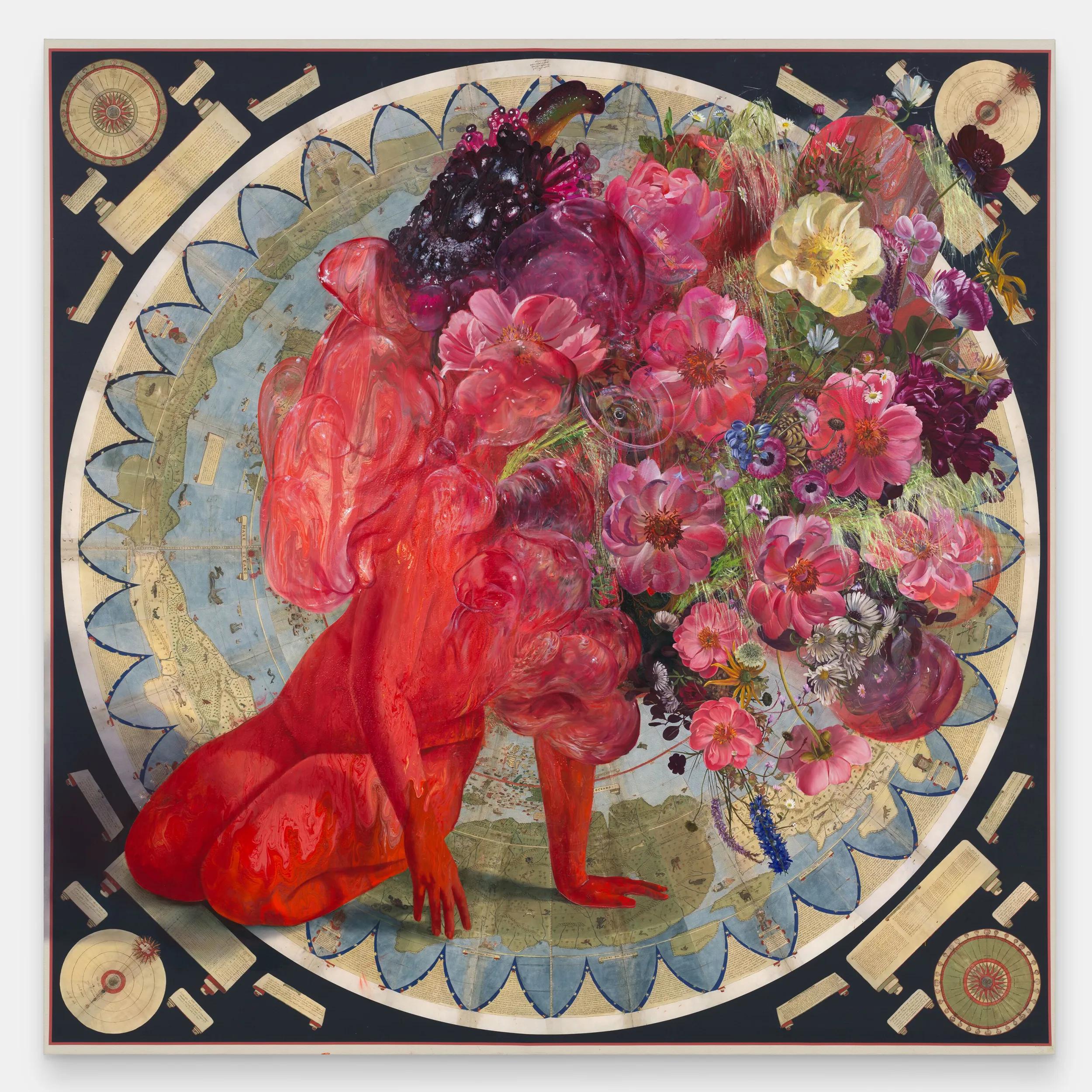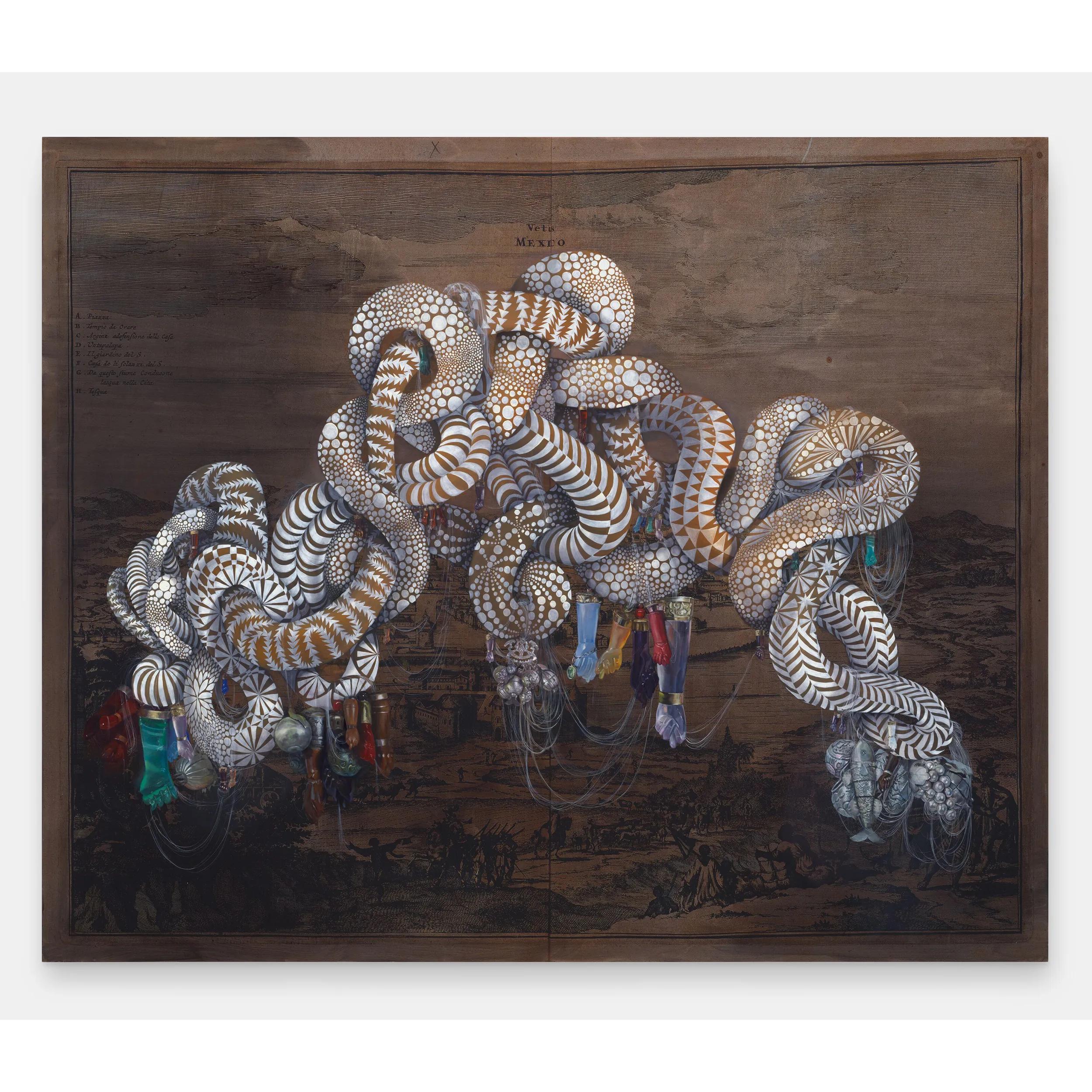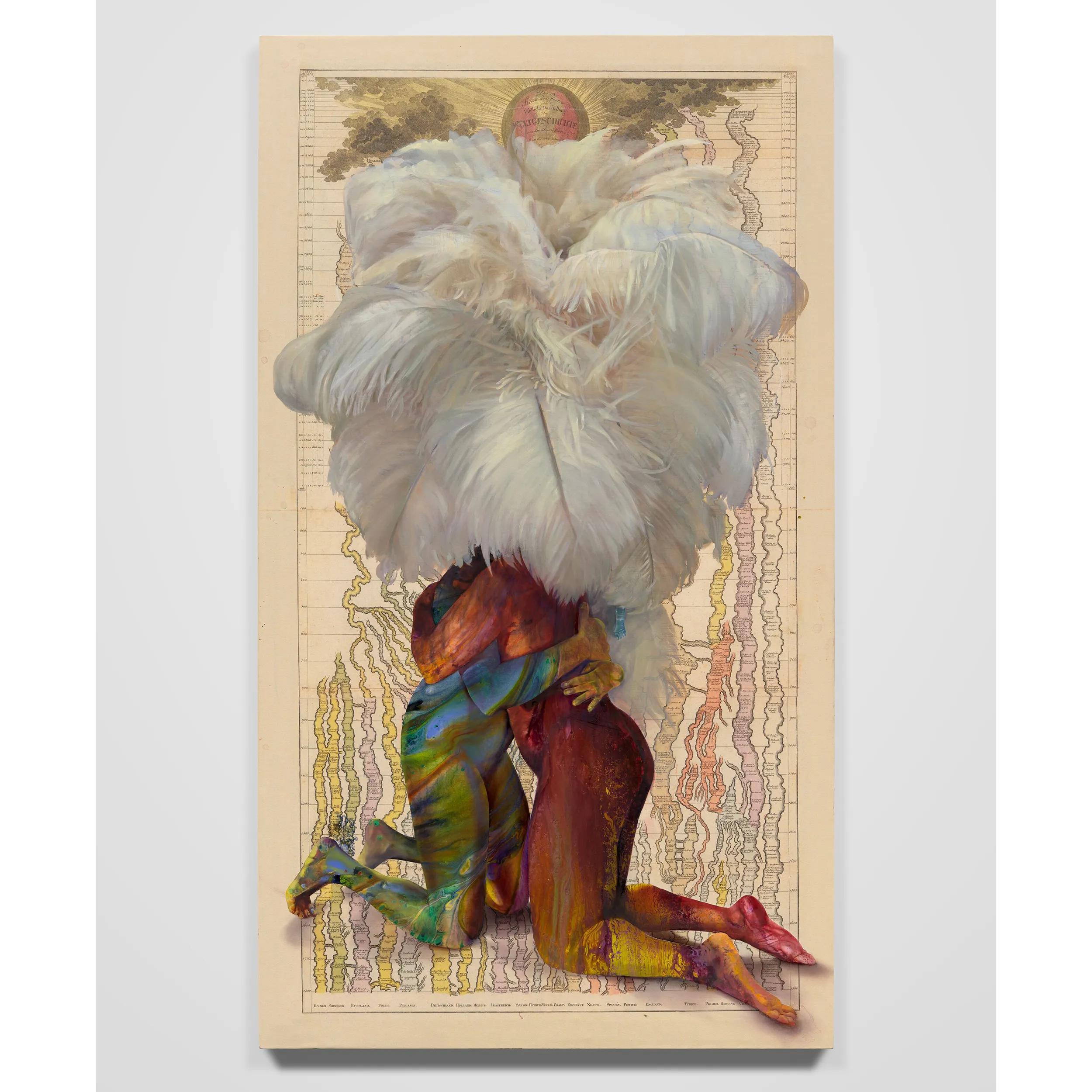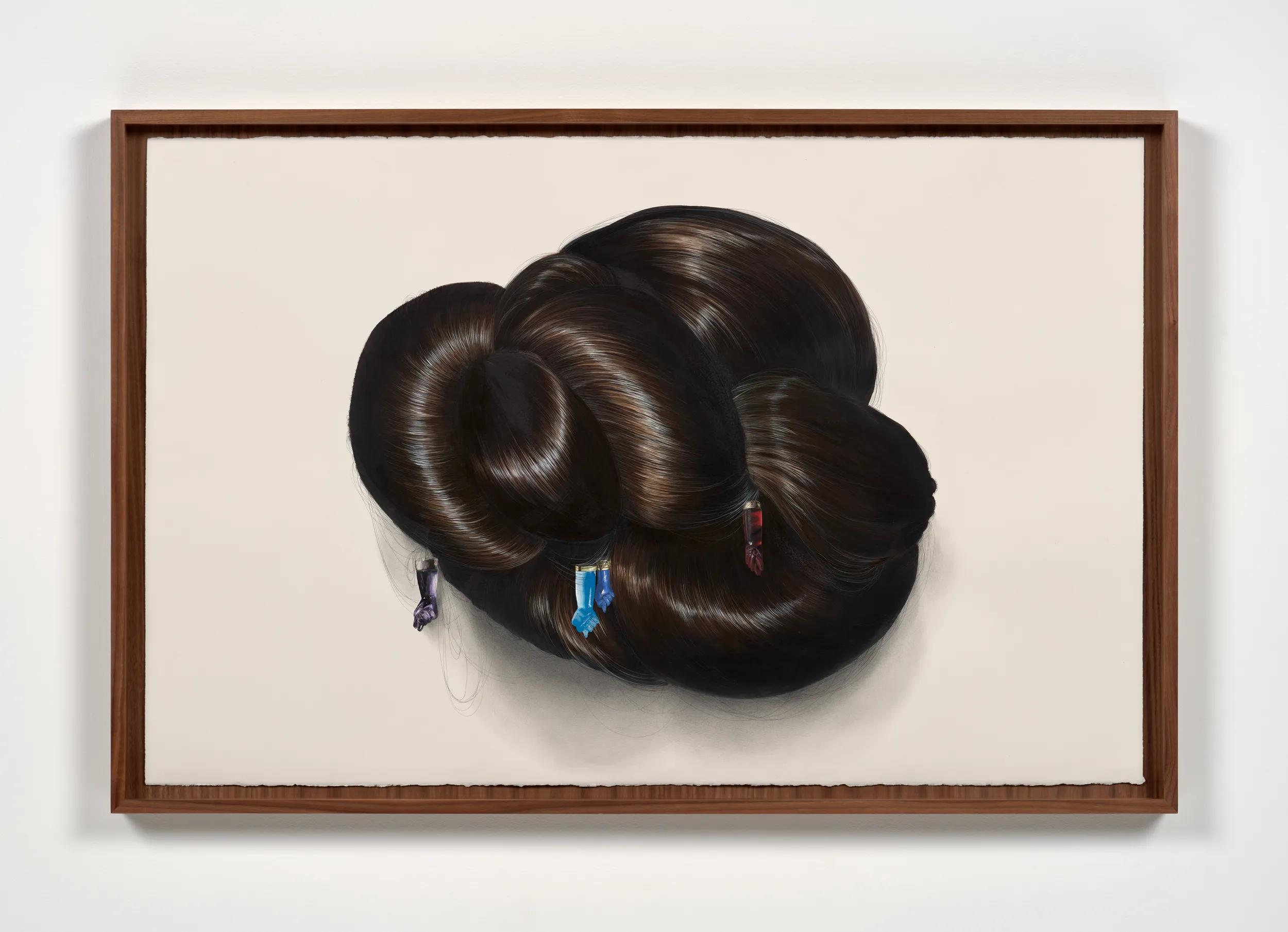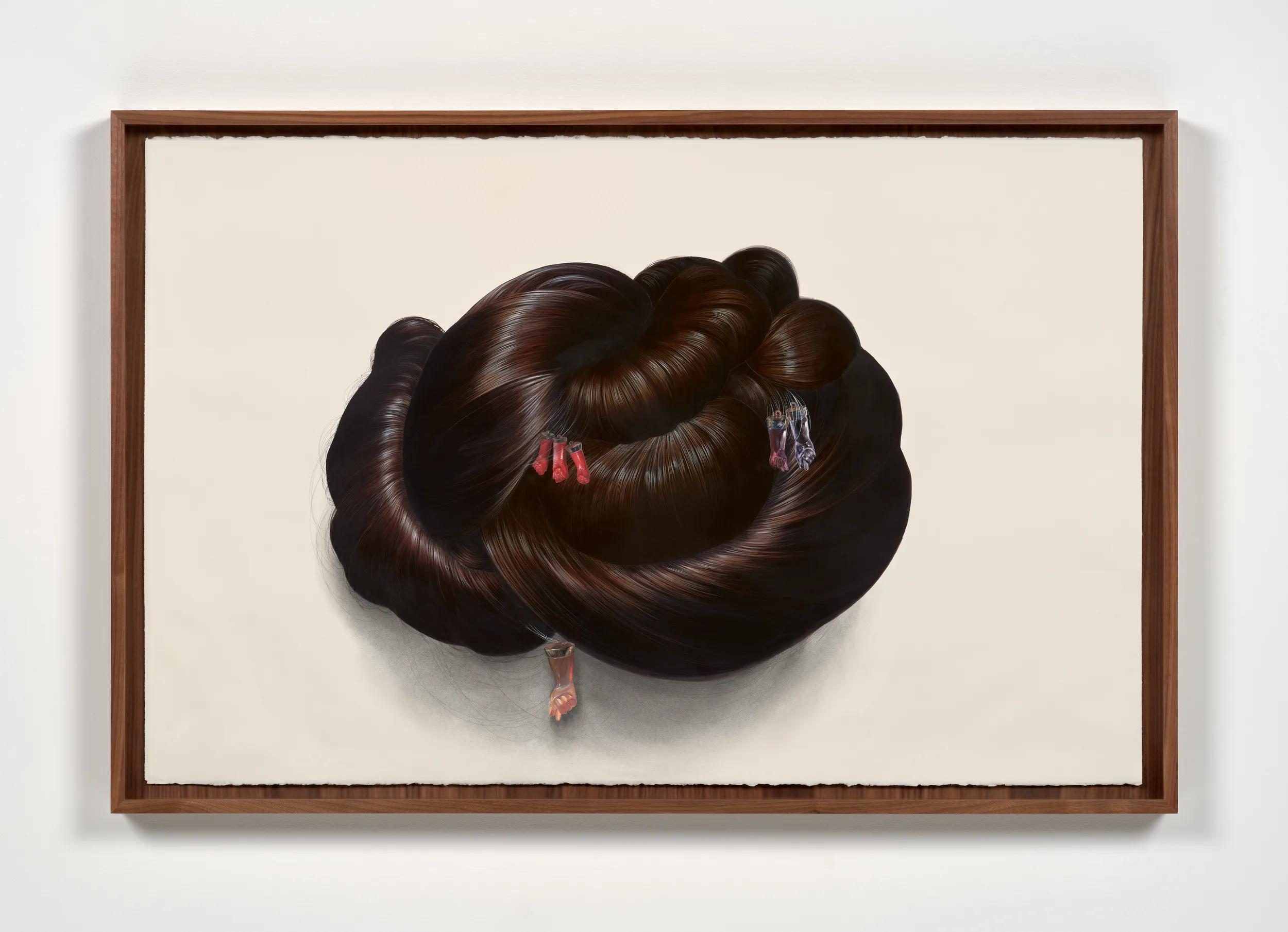FIRELEI BÁEZ
The Fact That It Amazes Me Does Not Mean I Relinquish It
13 September 2024 – 5 January 2025
about the exhibition
New York-based artist Firelei Báez has achieved wide acclaim over the past decade for her rigorous paintings, drawings and immersive installations that explore the influences of the Afro-Caribbean diaspora. Conjuring forgotten narratives, Báez carefully fills history’s lacunae with joyful rebellion.
In her first exhibition with Hauser & Wirth since joining the gallery in 2023, Báez presents new large-scale canvases, drawings and her first-ever bronze sculpture at the gallery’s Downtown Arts District center in Los Angeles. Complex and layered, Báez’s work depicts fantastical hybrid figures and reimagined worlds. Employing beauty to reprocess the enduring effects of violence and trauma, Báez challenges traditional representations of history, nationality, gender and race. United by common cause, the paintings incorporate a wide range of subjects including art history, science fiction, anthropology, pop culture, folklore and fantasy.

‘The fact that it amazes me does not mean I relinquish it’ is a reference to the work of Martinican writer and philosopher Édouard Glissant, a key figure in shaping theories informing the Caribbean’s influence on the global stage. Drawing inspiration from Glissant’s text, ‘Poetics of Relation’ (1990)—from which the title directly quotes—Báez navigates the tensions between identity and place, using Glissant’s concept of opacity to explore modes of resistance, namely the ability to navigate the world freely within a refusal of being fully understood—both to others and to oneself.

Báez considers mythology an important tool, ‘a way of correcting the past and projecting a different future.’ Growing up in the Dominican Republic, the artist heard local folk stories about a mythic femme trickster called a ‘ciguapa’ who was known for her elusiveness. While such lore was shared to discourage unruly and wild behavior, Báez has embraced the ciguapa in her work as a figure of endless possibility. Ever-morphing and multiplying, her composite creatures are often depicted with human legs, a coat of delicate fur and backwards facing feet so that she remains traceless and ultimately unknowable. In the ciguapa, Báez explores the body as a living archive, a shape-shifting repository of meaning and history, whose continuous transformation is inherently defiant.
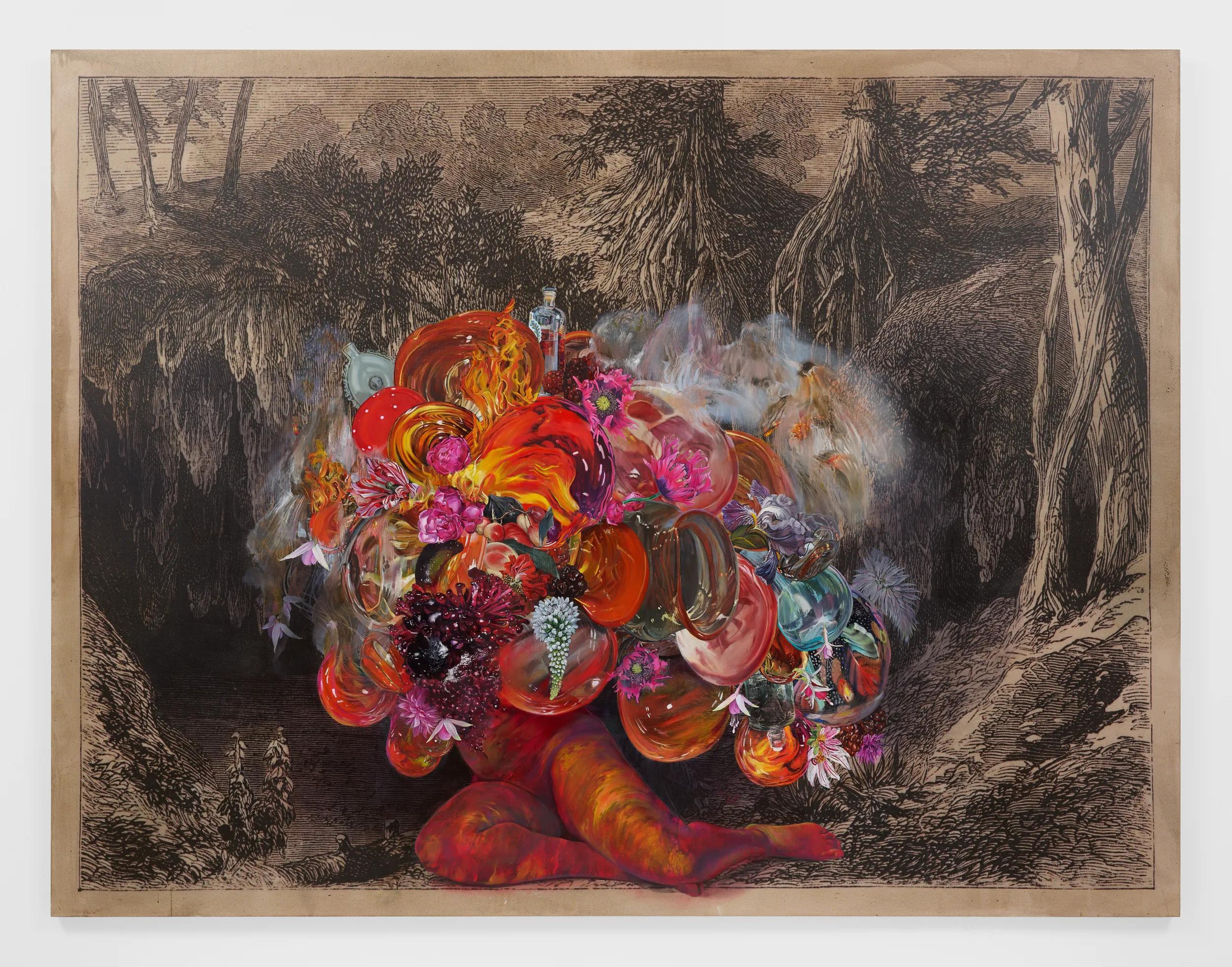
In the painting, ‘Zemi (A New Spelling of My Name)’ (2024), a supernatural figure appears at the entrance of a cave. Rather than standing before a blank canvas, Báez begins her paintings over plans that conceal narratives of violence and exploitation. In the aforementioned painting, Báez builds her imagery atop a 19th-Century drawing of the Taíno caves in Santana, Hispaniola. At the time of its production, the illustration functioned as a factual document; however, it was only an approximation of a real location wherein Báez’s hybrid figure materializes, a triumphant manifestation of empowerment and hope in a pieced-together landscape.
On view in the exhibition, Báez’s first foray into bronze also takes the form of a larger-than-life femme protagonist. Reaching across geographies and histories, the figure is caught between a graceful dance and muscular resistance; Daphne and Apollo encounter the ciguapa amid strong storm winds. In turning to a new medium, Báez deepens her exploration of historical implications: As a material that carries the weight of established knowledge and hierarchies, bronze is endowed with degrees of grandeur and the rigidity of historicity. As with her other archival interventions, the artist’s use of this literally and figuratively freighted medium can be read as a reparative gesture. Affirming the beauty of the material as a value while countering the power paradigms associated with it, Báez offers up a shape and image that convey defiance, healing and a promise of renewal. Complementing her paintings and drawings, this towering sculpture beckons viewers into the new worlds Báez prospects.

Museum Surveys
‘Firelei Báez. The fact that it amazes me does not mean I relinquish it’ at Hauser & Wirth Downtown Los Angeles coincides with the artist’s two museum surveys, ‘Trust Memory Over History’ at Kunstmuseum Wolfsburg Germany (6 June – 13 October 2024) and ‘Firelei Báez’ at Vancouver Art Gallery Canada (2 November 2024 – 16 March 2025), and follows her first UK exhibition ‘Sueño de la Madrugada (A Midnight’s Dream)’ at South London Gallery (28 June – 8 September 2024).

On View in Downtown Los Angeles
‘Firelei Báez. The fact that it amazes me does not mean I relinquish it’ is on view at Downtown Los Angeles until 5 January 2025.
Related Content
About the Artist

Firelei Báez
New York-based artist Firelei Báez casts diasporic histories into an imaginative realm, re-working visual references drawn from the past to explore new possibilities for the future. In exuberantly colorful works on paper and canvas, large-scale sculptures, and immersive installations, Báez combines representational cues that span from hair textures to textile patterns, plant life, folkloric and literary references, and wide-ranging emblems of healing and resistance. Often featuring strong female protagonists, Baez’s portraits incorporate the visual languages of regionally-specific mythology and ritual alongside those of science fiction and fantasy, to envision identities as unfixed, and inherited stories as perpetually-evolving. These empowered figures’ eyes most often engage directly with the viewer, asserting individuality and agency within their states of flux.
Born in Santiago de los Caballeros to a Dominican mother and a father of Haitian descent, Firelei Báez’s concerns with the politics of place and heritage can be traced back to her own upbringing on the border between Hispaniola’s two neighboring countries, whose longstanding history of tension is predicated in large part by ethnic difference. Báez’s work ties together subject matter mined from a wide breadth of diasporic narratives. In addition to self-portraiture, past series have examined ciguapas, elusive and cunning female creatures from Dominican folklore; tignons, head-coverings women of color were legally required to wear in 18th Century New Orleans LA; and the iconography of the Black Panther Movement. Báez often paints directly onto historical material, such as found maps, manuals, and travelogues, layering figures over them. By rendering spectacular bodies that exist on opposite sides of intersecting boundaries—between human and landscape, for example, or those reinforcing racial and class stratification—Báez carries portraiture into an in-between space, where subjectivity is rooted in cultural and colonial narratives as much as it can likewise become untethered by them.
Firelei Báez (b. 1981, Dominican Republic) received an M.F.A. from Hunter College, a B.F.A. from the Cooper Union’s School of Art, and studied at the Skowhegan School of Painting and Sculpture. In 2024, Báez will be the subject of her first major US survey at the ICA Boston, curated by Eva Respini. Her work has been presented in many significant international exhibitions, including the inaugural installation of the ICA Watershed, Boston (2021), curated by Eva Respini, now on view at The Momentary in Bentonville, Arkansas, and The Milk of Dreams at the 59th Venice Biennale (2022), curated by Cecilia Alemani. Recent solo presentations of Báez’s work include exhibitions at Louisiana Museum of Modern Art, Humlebaek; Witte de With Center for Contemporary Art, Rotterdam; The Museum of Modern Art, New York; The Studio Museum in Harlem, New York; The Andy Warhol Museum, Pittsburgh; and Pérez Art Museum Miami. The artist has recently participated in a number of group exhibitions at major institutions, such as the National Gallery of Art, Washington, DC; Cleveland Museum of Art; Art Gallery of Ontario, Toronto; Baltimore Museum of Art; and Rockbund Art Museum, Shanghai. She is the recipient of many awards, most recently the Cooper Union President’s Citation (2022), Artes Mundi Prize (2021), and Philip Guston Rome Prize (2021). Báez’s work is held in many significant private and public collections; the latter include the Baltimore Museum of Art; Crystal Bridges Museum of American Art, Bentonville, AR; Dallas Museum of Art; Fine Arts Museums of San Francisco; Guggenheim Abu Dhabi; Institute of Contemporary Art, Boston; The Marieluise Hessel Collection, Hessel Museum of Art, Center for Curatorial Studies, Bard College, Annandale-on-Hudson, NY; Nasjonalmuseet, Oslo; Pérez Art Museum Miami; San Francisco Museum of Modern Art; Sindika Dokolo Foundation, Luanda, Angola; Solomon R. Guggenheim Museum, New York; The Studio Museum in Harlem, New York; Tate, London; and Whitney Museum of American Art, New York.
Current Exhibitions
1 / 11
